Best Wi-Fi Routers for Strong Signal 2020
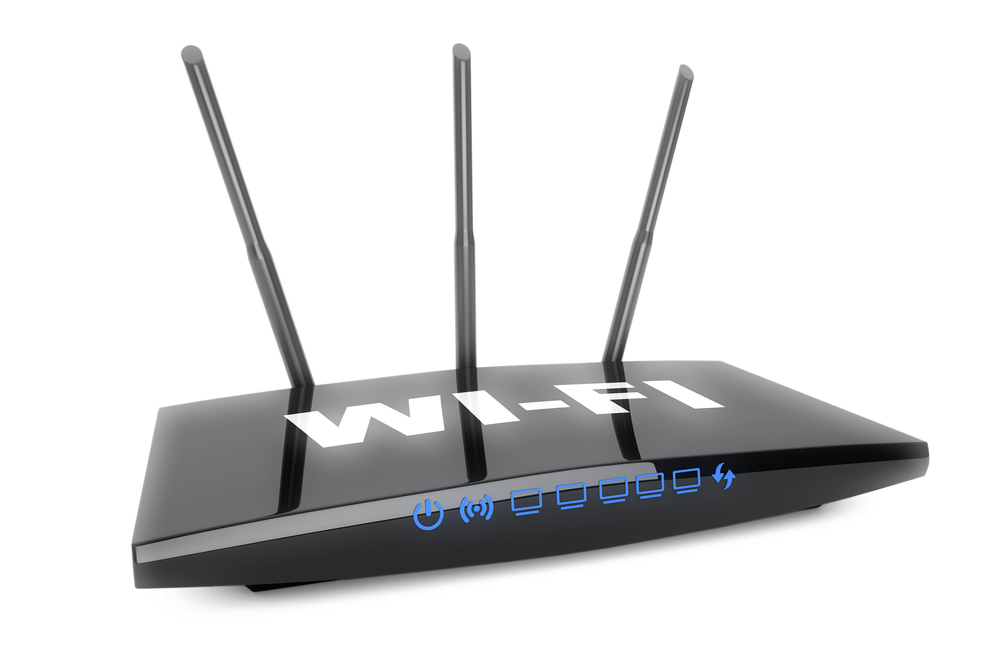
Long gone are the days when a clip of your favorite band was downloaded from the Internet for several hours or days. Modern Wi-Fi routers are fast and quiet. Nevertheless, items such as:
- data transfer rate;
- parameters that are required to create a connection, both on the PC and the device and receive packets;
- allowable communication distance with the gadget without loss of signal quality;
- the presence of encryption and ensuring security in the network without the danger of hacking;
- how to connect the router to a PC directly or use a wireless connection method.
excite even the undemanding user to the equipment. This ranking of the best Wi-Fi routers for strong signal for 2020 will help you choose the best router.
What is a Wi-Fi router and what criteria should be followed to choose it?
The router contains many settings and parameters that do not make sense to consider, as all devices support them. Not all functions and capabilities are even listed on the manufacturers' website and are available for review in both physical and online stores. But any consumer should have some information before buying. Among these parameters:
Working frequency
The length of radio waves for processing incoming and outgoing traffic with further transmission to the next device using a wired or wired type of action. The ranges used are as follows:
- 2.4 GHz;
- 5 GHz.
Connection standard
There are more than 20 Wi-Fi communication standards. The most widespread are 5. Here they are:
- 802.11. It is the oldest type. It is outdated, as it provides a maximum data transfer rate of 11 Mbps and has a maximum signal distance of up to 50 m. Operates at a frequency of 2.4 GHz.
- 802.11 a. Compared to the previous version, the speed of interaction between devices is 54 Mbps. Due to the fact that the devices must operate at a frequency of 5 gigahertz, the amount of interference is significantly reduced. Electronics can be removed from Wi-Fi up to 30 meters. Despite the fact that the speed was increased, data transmission, at the same time, the range was reduced and the cost of using the technology increased, so it did not become widespread.
- 802.11 g. Supports standards that came before it. Provides a data transfer rate of 54 Mbps. The range returned to the destination of 50 m, but the frequency range was reduced to 24 GHz.
- 802.11 n. It is not compatible with other standards, therefore it received little distribution, despite the fact that it appeared a long time ago. It can broadcast in 2 bands - 2.4 or 5 GHz. The range is 100 m. The throughput in laboratory conditions reaches 480 Mbps. In practice, the data exchange rate does not exceed 240 Mbit.
- 802.11 ac.The leader among the standards used in all parameters as of 2020. Ideally, the bandwidth is up to 1.3 Gbps. In real conditions, data transfer is carried out at a speed of up to 600 MB. The emergence of MIMO technology guarantees the uninterrupted operation of several devices, since the interaction with the connected equipment goes in several data streams. The operating frequency covers the range from 5 GHz to 380 MHz. Due to this, the equipment operating in accordance with this standard has an improved penetration ability, therefore it easily works through concrete and drywall.
Availability of LAN, WAN, USB-connectors
The WAN cable communicates with the Internet. LAN wires are used to connect to a local network. The LAN connectors on the router are of the following types:
- RJ-45 - for fiber optic or Ethernet technology;
- RJ-11 - telephone line ports. The quantity can vary from 2 to 8 pieces.
USB allows you to connect SSD drives and flash cards to the modem, as well as 3G modems with wireless connectivity.
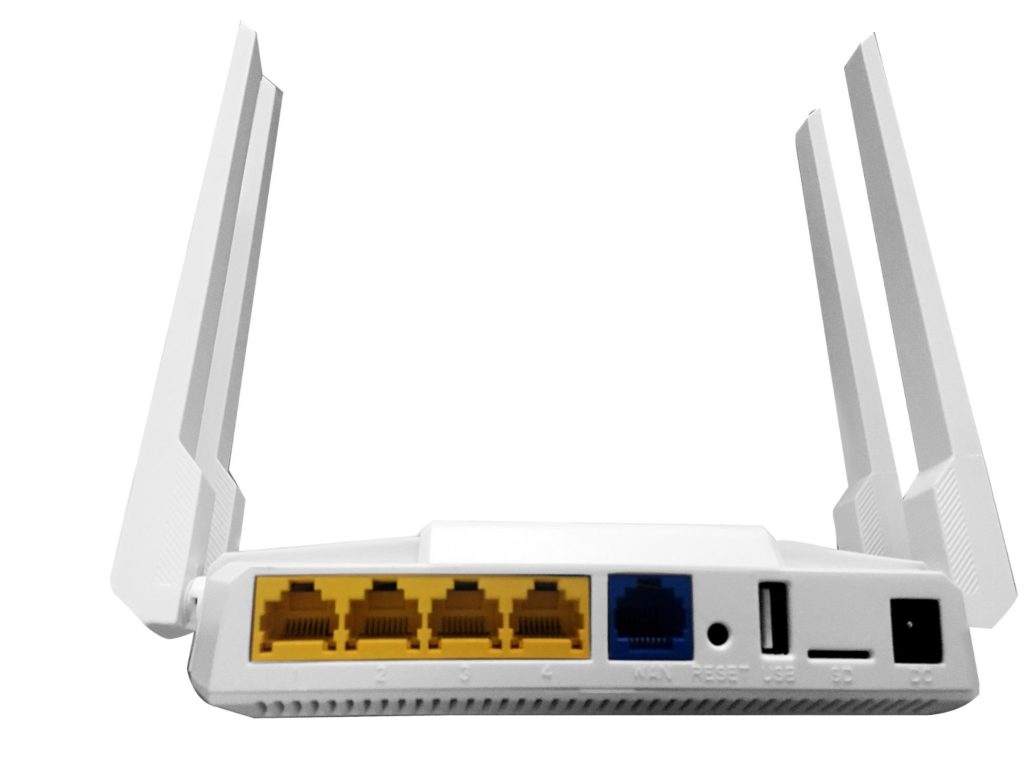
Interface and utilities
In addition to communication, routers can be equipped with:
- Firewall;
- Tools for interacting with IP telephony;
- Functions of work with printers and FTP-servers.
Changing the signal transmission parameters and accessing the settings of additional features is carried out through the firmware built into the router. To enter it, you need to enter a special IP or URL on a PC or laptop, followed by a username and password. When the data in the browser of a tablet, mobile phone, laptop or stationary PC opens a graphical shell, the control panel of the router, in which you can monitor the state of the gadget and change the properties of its operation. Changing device parameters can also be carried out using an application that is available in the Play Market for a smartphone.
Important points and misconceptions
The use of routers gives rise to some facts close to sophistry. To understand how true they are and to separate truth from fiction, it is necessary to mention them. Here is some information, for thought, supported by facts:
- Data transfer speed is limited by law. It is allowed to use a bandwidth of 150 MB per second. There are no descriptions on the Internet of cases when the user was seized equipment, or he was limited in rights and imprisoned. However, ignoring this condition, the user is obliged to be aware of what is being done illegally.
- Many of the characteristics of the router do not have to be specified and they are absent even on the manufacturer's website, since they relate to fine-tuning the equipment. Debugging of these functions in most cases is not needed even by advanced specialists, let alone those people whose activities are not related to the establishment of local networks.
- It doesn't really matter what processor and the amount of RAM is installed in the router. The larger the numerical values the internal filling of the router can boast, the more stable the devices connected to it will work. For domestic needs, this is not critical, since several mobile phones, a laptop and a video set-top box are connected to a regular router to a regular router at the same time, then in such operating conditions, the connection speed may decrease somewhat. However, if the tariff plan specifies a bandwidth of 30 Mbit and more, then nothing terrible will happen with such a load. Gadgets connected wirelessly will function flawlessly. The person whose activity is connected with the laying of wireless networks, or the one who is obsessed with the bandwidth of the equipment, needs fine tuning of the equipment;
- Under ideal conditions, a budget router can transmit information to a device at a distance of up to 300 m. Due to concrete walls and the presence of neighboring routers, as well as equipment that operates at a frequency of 2.4 GHz, the signal coverage area is reduced from 50 to 30 m.For use in an apartment, if you install Wi-Fi in the middle of a dwelling, this range is quite enough.
The presence of USB ports does not mean that the router supports 3G modems. The availability of the function must be checked on the website of the router manufacturer or consult the seller when purchasing
Rating
The rating allows you to choose a reliable router, as it is based on the opinion of consumers, briefly introduces a specific router model, and guides in prices.
14. Xiaomi Mi Wi-Fi Router 3G V2

The 3G router of the Chinese corporation Xiaomi has gone through a complete upgrade and will be an excellent purchase for the home. Balanced use of gigabit LAN and LAN port meets user needs. The speed of broadband access using fiber-optic lines reaches over 100 Mbps.
Send hundreds of photos during parties and dinners with your family, and the speed is still stable despite the increase in the number of connected equipment. The router has 4 external multi-component antennas with a high gain, which can be directed anywhere.
Through accurate testing, the developers managed to combine them into a coherent internal structure, effectively eliminating various kinds of distortion, improving the signal and increasing bandwidth.
Important! Antennas function safely in all conditions.
Despite the increasing demands of users to the Network, the main difficulty is still in the stability of the routers. The 128 MB SLC flash memory exceeds the memory capacity of ordinary models, so the memory capacity of the 3G router of the Chinese corporation Xiaomi is enough to install many functional plug-ins.
The user has the opportunity to fully customize the router "for himself", and since the era of "smart gadgets" has come, home appliances often need to be connected to the Network. 256 MB of RAM guarantees uninterrupted connection of equipment, as well as free connection of gadgets and stable functioning of plug-ins.
With a dual-core MT7621A chip running at 880MHz, surfing the web, transferring pictures and downloading videos is easy, fast and stable. Network latency is kept to a minimum, even during online gaming.
Specifications:
RAM - 256 MB;
built-in memory - 128 MB;
maximum speed - 1167 Mbps;
antennas - 4 (non-removable);
weight - not specified.
- best buy for spacious rooms;
- gigabit network port;
- flash memory capacity is 128 MB;
- 2-core chip;
- synchronous connection of 128 devices.
- lack of the Russian language;
- requires an adapter to the socket.
The average price is 2,400 rubles.
13.netis N4

Sold in a small box made of sturdy cardboard with a photograph of the router and information on technical parameters. The package includes:
- BP;
- instruction;
- guarantee coupon.
The router is made in a small case made of plastic materials in black colors. The outer surfaces are matte, so the model stands out from the competition with its resistance to dirt and fingerprints. The router is developed on the basis of the RTL8197FN processor, the clock frequency of which is 600 MHz. 64 MB of RAM and 8 MB of flash memory are provided on board. It functions in 2 frequency spectra:
- 2.4 GHz at 300 Mbps.
- 5 GHz at 867 Mbps.
3 cable connectors provide 100 Mbps bandwidth. The model supports IPv6 and TR-069.
During setup, in the first window, the user will see the quick settings menu. Here you can specify the settings for connecting to the provider, as well as secure the wireless connection. For most of the tasks, such parameters are fully sufficient.
Important! The default language in the router is Russian.
It is the cheapest router that operates in two frequency ranges.The availability, as proved by the practice of long-term studies, did not negatively affect the quality of coverage and throughput. At the same time, detailed settings are provided, as well as support for modern technologies. All of the above is assembled into one small, compact package.
Specifications:
RAM - 64 MB;
built-in memory - 8 MB;
maximum speed - 1167 Mbps;
antennas - 2 x 5 dBi (non-removable);
weight - not specified.
- rich equipment;
- design;
- speed;
- coverage range;
- assembly reliability;
- availability;
- functionality;
- practicality of setting;
- stability of work.
- rather weak power at 5 GHz.
The average price is 1,300 rubles.
12. ASUS RT-AC1200RU

This is a modern 2-band wireless router. The model supports the 802.11ac standard, which means that the device stands out from the competitors with increased data transfer speed over a wireless Wi-Fi network. Due to the presence of the proprietary AiPlayer option, the router plays back the owner's favorite tracks via an external storage device connected to the USB port.
Specifications:
RAM - 16 MB;
built-in memory - 64 MB;
maximum speed - 1167 Mbps;
antennas - 4 x 5 dBi (non-removable);
weight - 271 g.
- high-speed transmission of information over a wireless network;
- intuitive ASUSWRT user interface for configuring the router;
- Wide area of wireless network coverage through 4 outdoor antennas (2 for each band);
- sophisticated parental control tools, including restricting access to the Internet on a schedule;
- proprietary Router App program for controlling the router using the phone;
- Dual WAN option makes it possible to use two Internet connections from different providers at the same time.
- not detected.
The average price is 2,600 rubles.
11. ZTE MF920RU

The router is sold in 2 colors:
- White.
- The black.
The second is made of matte plastic materials with a "rough" surface. The oblong ends with ports and keys are covered with gray inserts. The dimensions of the model are 107X64X14.5 mm, and the weight is 100 g. This is a rather small device that easily fits into the middle pocket.
The base of the gadget is the ZX297520V3 processor from Wisefone. It has 4 cores:
- 2 cores like Cortex-A53;
- 2 service.
We could not find any information about him on the Internet, but on the other hand, this does not matter for the monitored router. The amount of memory declared by the manufacturer is 128 MB for both flash memory and RAM.
During power activation, the indicators flicker a number of times, and after 2-3 minutes the device is ready for use. There are 2 basic solutions to connect clients:
- Wi-Fi.
- Cord.
In the case of a cable, the device acts as a network card. In certain versions, it may be necessary to install drivers written directly to the router in CD-ROM emulation mode.
There is no difference in interfaces. The only thing worth focusing on is the lack of data about the cable client in the router settings interface. For mobile routers, autonomy and speed are important parameters.
For various reasons, it is almost impossible to analyze these characteristics without bias. The fact is that they are influenced by the cellular operator, geolocation, network load, the number and type of customers, the amount of traffic, etc. During the tests, there were no complaints about the monitored router. It has shown itself to be fully qualitative and predictable. The connection did not break even at maximum loads.
Specifications:
RAM - 128 MB;
built-in memory - 128 MB;
maximum speed - 150 Mbps;
antennas - not provided;
weight - 100 g.

- small in size;
- comfortable indication;
- works both via Wi-Fi and via a cord;
- high performance in offline mode;
- integrated software;
- the interface is properly Russified;
- practical and simple appearance;
- availability of a mobile version;
- support for working with SMS;
- external antennas can be connected.
- not detected.
The average price is 3,250 rubles.
10. Keenetic Viva (KN-1910)

The bandwidth is 1800 Mbps. The device can operate in the 2.4 and 5 GHz bands, while choosing the frequency where the connection is of the highest quality. The gadget is equipped with a built-in torrent client for downloading files. In fact, the router is not an ordinary router, but positions itself as an Internet center, offering the user a huge selection of necessary and unnecessary parameters that will become a real paradise for an advanced user and an amateur, change the equipment configuration. The connection wizard will not let the person who is faced with debugging options for the first time fall into a state of stupor, since thanks to him, all parameters will be set in semi-automatic mode. The device is distinguished by its reliable assembly and the presence of 4 antennas. Indication of LAN connections, WPS and Power buttons are also present. Of the features, it can be noted that not only drives or a 3G router can be connected to it, but also the parameters of IP telephony can be adjusted. Can work like a point and has tools to work with an FTP server. The price varies from 5 to 6.5 thousand rubles.
- Variety of options and utilities;
- Signal quality and range.
- Price.
9. TP-LINK TL-MR6400

You shouldn't expect anything from the model that might surprise - it's just a basic router that does its job well. The number of antennas varies from 2 built-in to 4 if additional ones are connected to it. All parameter adjustment actions are carried out using the web interface, which is available on any PC. The radius of the Wi-Fi network is small, but it is quite enough for the area of an apartment or house. The power of the LTE signal, for which the antennas are installed, is enough to provide operation of several devices within an office building or a small country house. If you want to connect several dozen devices to it, then you don't need to wait for a stable connection. The router operates in the 2.4 GHz range, is equipped with 4 connectors, 3 of which can be used to connect a LAN cable, one goes for an Internet cable. There is a compartment for installing a SIM card. For lovers of gadgets with many secondary utilities and options, the router is not suitable, as it is very simple. Management can be carried out using an application available for download in the Play Market. Elements, equipment controls and monitoring tools are present in the interface, but it cannot be said that any parameter can be changed. The estimated price is 4,710 rubles.
- The ability to use mobile traffic;
- Easy to customize.
- No additional features;
- Price;
- Radius, Wi-Fi action, and signal strength.
8. ASUS RT-AC53
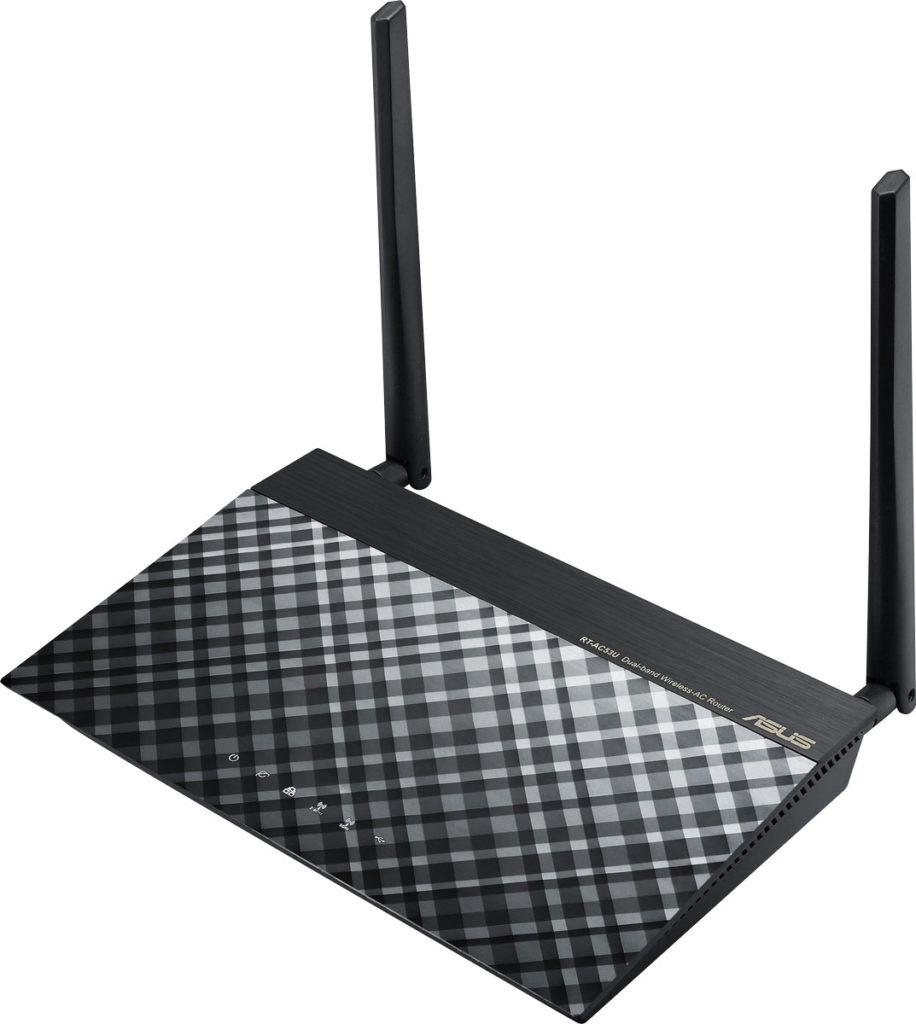
Has 8 connectors, network connections and is equipped with USB ports. The interface settings make up a total of 21 items with categories and subcategories, which will give an inexperienced user some confusion. Nevertheless, the initial configuration of the router is simple. Of the minuses, one can single out large dimensions, but the signal quality will be quite stable, thanks to the presence of 4 removable antennas.
A distinctive feature of this router is that it allows you to have 2 Internet connections at once that work independently of each other. Operates in 2 bands 2.4 and 45. There are such features as the presence of its own Firewall and the priority of game traffic, various bandwidth settings. The packet processing speed, at a distance of 8 m, is 313 Mbps when operating at 5 GHz and 132 Mbps at 2.4 GHz. You can configure the router using the setup wizard.The interface will show complete information about what devices are connected to the router and what the bandwidth is. The operation of the device is carried out by a quad-core processor and 256 MB of RAM, which makes its operation very stable when several dozen devices are connected. The price is in the range of 2.5-3 thousand rubles.
- The number of adjustable parameters;
- Signal quality.
- Dimensions;
- Price.
7. HUAWEI E5573C
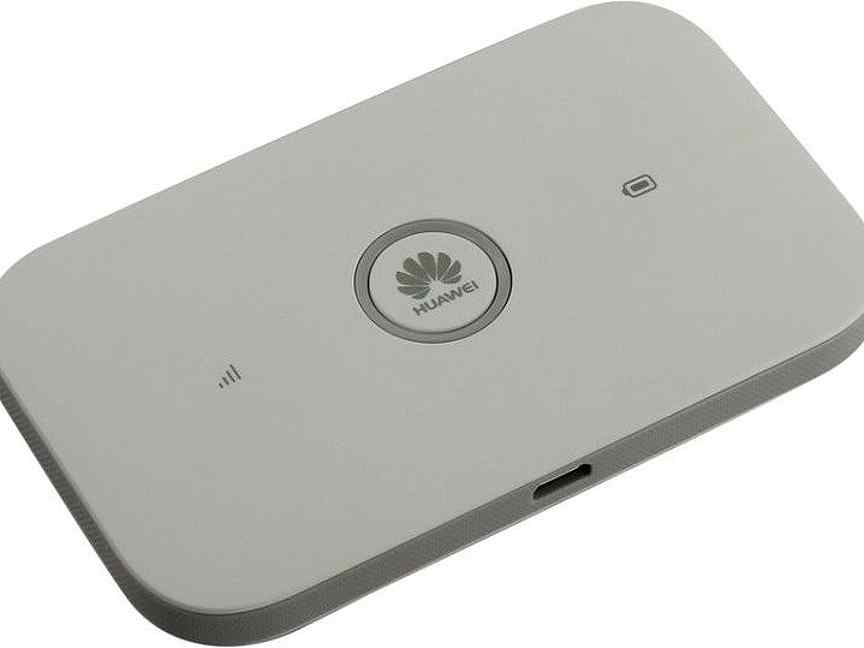
The main advantages of this router are that it is portable, equipped with a 1500 microampere battery and will work even when the electricity is turned off. The size does not exceed the dimensions of a modern smartphone. In the center there is a large power button, and on the sides there are two indicators, one of which shows the battery charge level, and the second - the network status. Configuring the router is optional - you can insert a SIM card into it, press the power button to go online. However, it is equipped with a web interface that can be controlled from a PC or using a mobile application. To display the interface on a stationary computer, you need to connect devices via Wi-Fi or using a micro-USB cable. The router control panel has all the necessary settings. The user does not experience a lack of functionality in it. The declared bandwidth is 150 MB, but in practice it is reduced to 100. The device operates at a frequency of 2.4 GHz. Estimated price - 2390 rubles.
- Portable;
- Initial setup is optional.
- Sagging speed;
- Small battery capacity.
6. Xiaomi Mi Wi-Fi Router 4
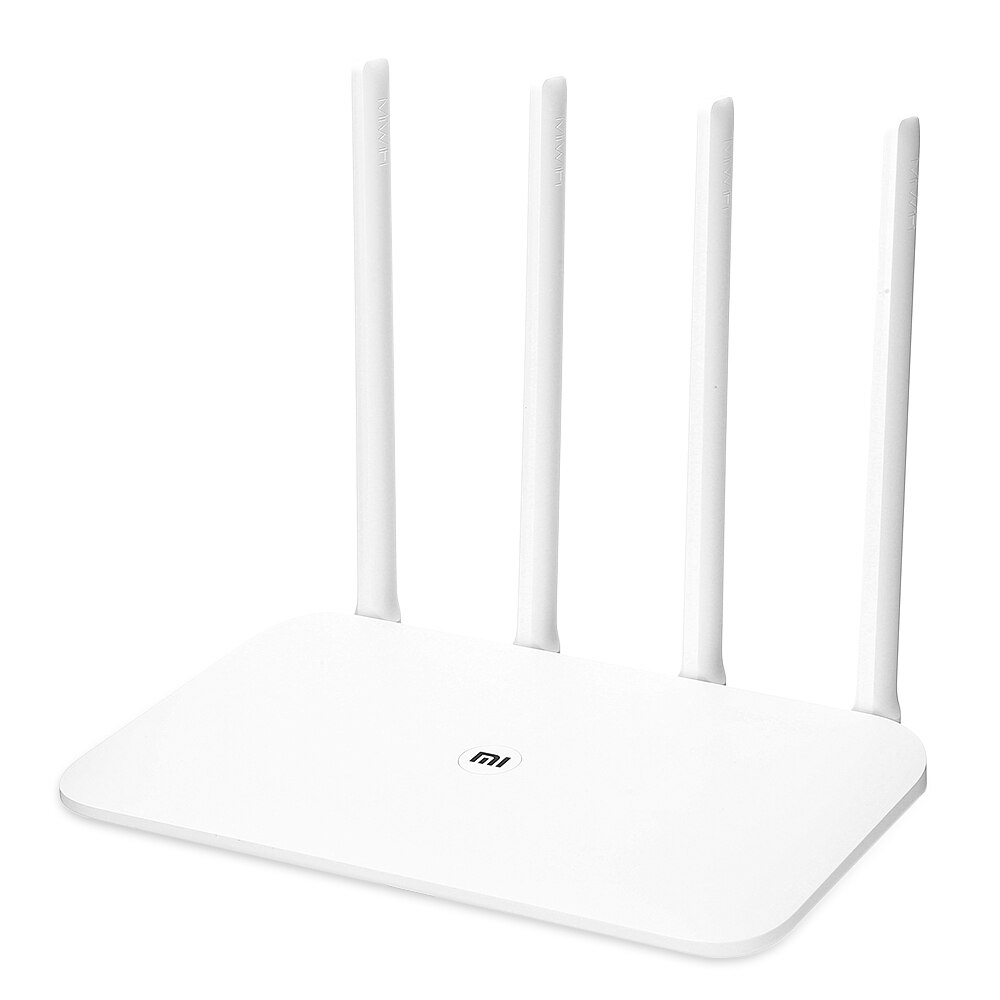
The device uses a dual-core processor and 4 non-removable antennas, which provide operation of up to 28 connected devices simultaneously. The router is equipped with 2 LAN ports and 1 WAN connector for connecting to the Internet. The developers have refused from USB ports. A distinctive feature of the device is the presence of a wireless connection by pressing a button, and not using a password. The router operates at 2.4 and 5 MHz frequencies. The body is not plastic, metal, so it is not afraid of overheating. The price ranges from 1,800 to 2,800 rubles.
- Connection quality;
- Bandwidth.
- The interface is in Chinese.
5. Tenda AC6
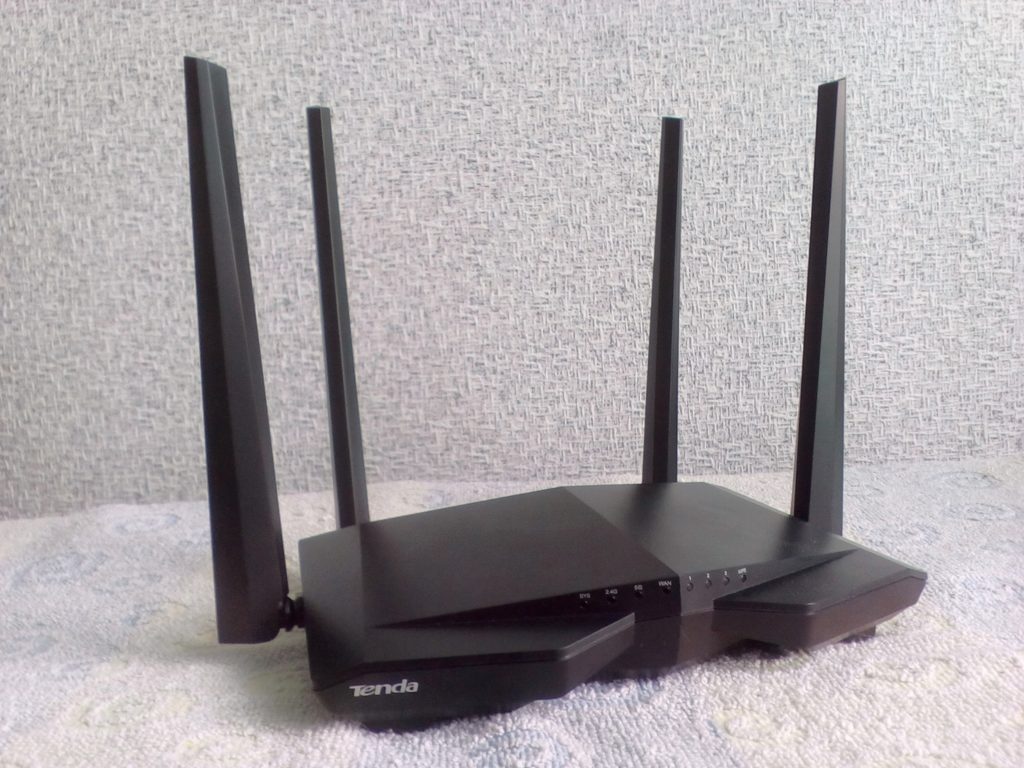
Packet exchange can reach speeds of 1 Gbps. The work is carried out in 2 bands to choose from - 2.4 or 5 GHz. Bulky, but outwardly looks representative. Equipped with 4 antennas, 3 LAN ports and 1 connector for an Internet cable. Using the router is quite convenient, thanks to the intuitive interface and the setup wizard. It can be used as an access point and configured via a mobile phone using an application. The Control Panel contains all the necessary information about the status of any particular parameter, diagnostic and security utilities. It has no USB ports, but there is a power button and indicators for network cables for each of the connectors. Price - about 1700 rubles.
- Bandwidth.
- Dimensions.
4. TP-LINK TL-WR840N
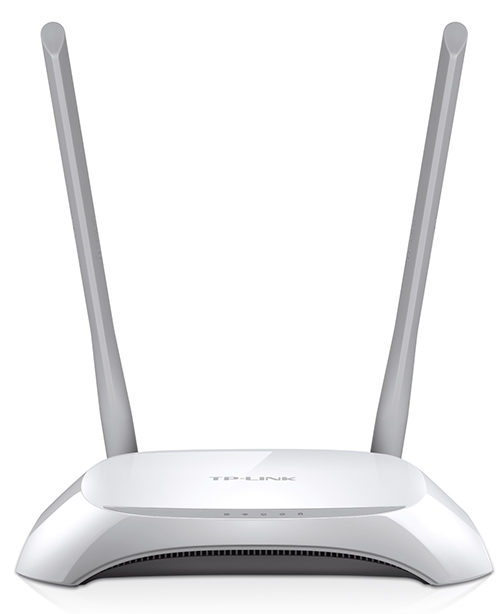
Equipped with 4 LAN ports. Has the function of passwordless router access thanks to WPS. It operates at a frequency of 2.4 GHz and provides data transfer rates up to 300 Mbps according to the 802.11n standard. Has a setup wizard that allows any user to easily set the initial parameters of the router. It will appeal to an advanced user, thanks to the abundance of settings, in manual mode, and the information provided, which can be found in the Russian-language web-interface. Luminous powder are Russified. Antenna - non-removable. Of the declared 300 Mbit, in real conditions, it transfers data at a speed of 18 Mbit / s due to everyday factors, which, in principle, is sufficient for the functioning of several devices without freezes and errors, breaks. USB ports - no. Estimated price - 939 rubles.
- Variety of settings in manual mode;
- Easy to configure in wizard mode.
- The reduction in speed can reach 18 Mbps from the declared 300.
3. Mercusys MW325R
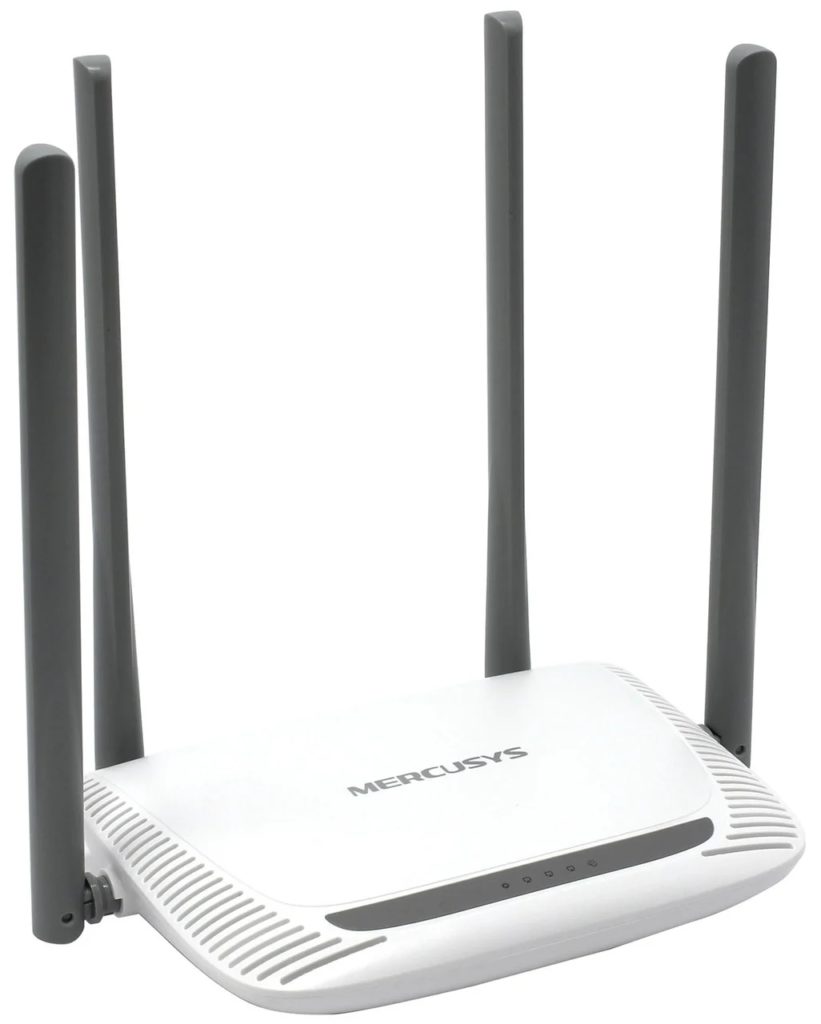
The model is equipped with 802.11 ac technology. Has 3 LAN ports and 4 antennas. Operates in the 5 GHz range. In the conditions of the apartment, it has no dead coverage areas. The bandwidth is 100 Mbps. There are no holes for wall mounting. The parameter settings are varied and carried out through the browser interface. Thanks to the wizard, the settings are simple and semi-automatic. From the user - a minimum of actions are required. USB ports and usability, which are typical for expensive models, are absent. Signal range - up to 500 sq. meters. The price is in the range of 800-850 rubles.
- Signal quality and range.
- Lack of USB ports;
- No holes for wall mounting.
2.Xiaomi Mi Wi-Fi Router 4C
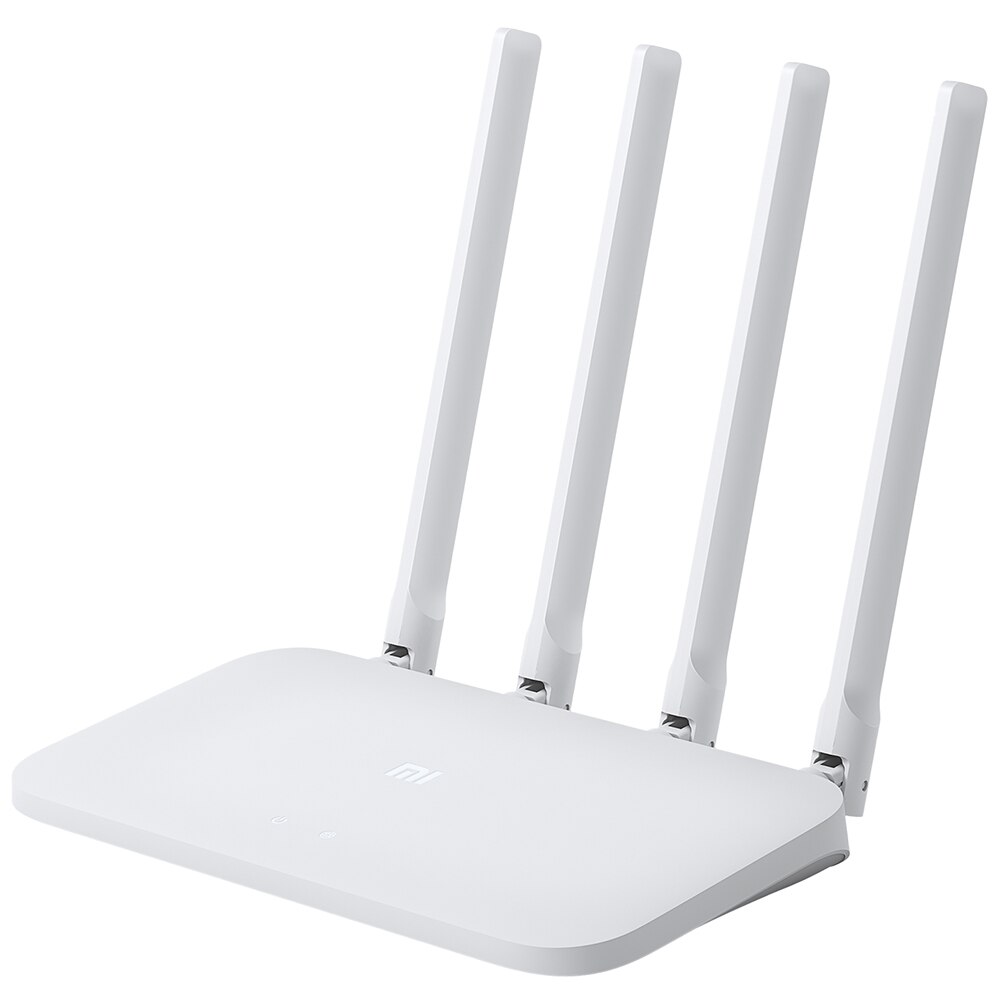
The device is controlled in two ways - via a smartphone and via a browser. The second option has some drawback - the interface is Chinese-language, but it is intuitive. The variety of adjustable parameters and detailed information about the operation of the device makes the model one of the most used. But this is not the only difference that makes the router stand out. The bandwidth is 100 Mbit / s and is carried out in 2 frequency ranges. The electronics are equipped with two detachable antennas. The hardware part is represented by two LAN connectors, which may seem like a rather small number. USB ports - none. These are the only errors of this model, although you can find complaints on the Otzovik about the lack of fastening to the walls. The price of a router varies from 770 to 1800 rubles.
- Signal quality and range;
- Appearance;
- Expanded but simple interface.
- 2 LAN ports;
- Panel, control via browser in Chinese.
1. D-link DIR-615 / T4

Is the best based on their user reviews. Despite the fact that it does not have a USB and does not support a frequency of 5 GHz, these omissions are compensated for by the reliability of operation, simple configuration, and the breakdown qualities of the signal for several floors without subsidence of the transmitted information. Various glitches and freezes are absent. At the beginning of operation, the lack of indicators for LAN cables and a button to turn off is a little worried, but you quickly get used to it. The interface has a detailed setting. The router is equipped with two antennas. Refers to the budget segment. The price is approximately 1090 rubles.
- Quality of work.
- Lack of indication of LAN ports.
Conclusion
Today, the user is more interested in budget electronics models that provide quality communication and a long range. Attention is drawn to the signal transmission standards. Additional utilities are secondary.
new entries
Categories
Useful
Popular articles
-

Top rating of the best and inexpensive scooters up to 50 cubic meters in 2020
Views: 97661 -

Rating of the best materials for noise insulation for an apartment in 2020
Views: 95022 -

Rating of cheap analogues of expensive drugs for flu and colds for 2020
Views: 91751 -

The best men's running shoes in 2020
Views: 87681 -

Top ranking of the best smartwatches 2020 - price-quality
Views: 85091 -

Best Complex Vitamins in 2020
Views: 84801 -

The best dye for gray hair - 2020 top ranking
Views: 82406 -

Rating of the best wood paints for interior use in 2020
Views: 77202 -

Ranking of the best action cameras from China in 2020
Views: 75269 -

Rating of the best spinning reels in 2020
Views: 74827 -

The most effective calcium supplements for adults and children in 2020
Views: 72463 -

Top rating of the best means for male potency in 2020 with a description
Views: 68296









